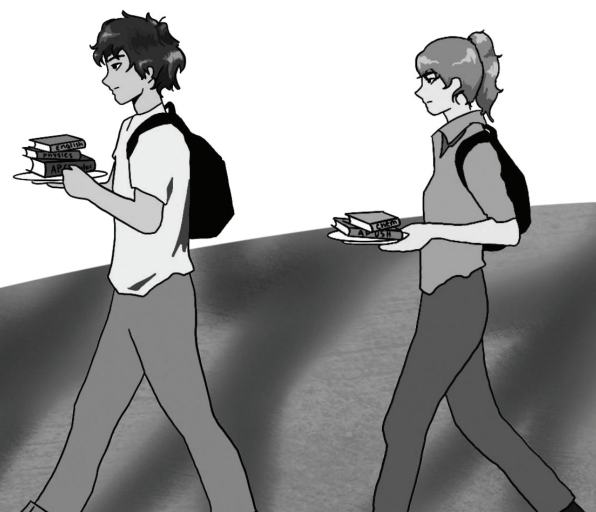Silicon Valley culture, course offerings undervalue humanities in favor of STEM

Every February, students returning in the fall are tasked with choosing five to eight of the hundreds of courses offered. In doing so, students interested in the humanities may find their interests continually neglected by science, technology, engineering and math (STEM) culture—an imbalance exacerbated by Gunn’s course selection options. The underrepresentation of humanities, evident in course selection and the oppressive Silicon Valley culture, harms the mindset of students interested in pursuing a humanities-based career.
While the science and math departments offer many opportunities for honors and advanced course laning— which lets students choose their class difficulty—the history and social sciences department does not. Even though this standardizes learning and stabilizes mental health, this decision further contributes to the problematic STEM-centric culture that has developed at Gunn.
During their freshman and sophomore years, every student is placed in the same World History, Contemporary World History and U.S. Government social studies courses. Meanwhile, students may choose from a myriad of math course options, depending on their skill level. For math, the “typical 9th Grade classes” listed in the course catalog are Algebra 1A, Geometry A and Geometry H; however, students with more math experience can place into higher-level math courses with a test. In the science department, freshmen choose between two biology options, and in sophomore year, there are five course options of various levels and subjects. This imbalance of options throughout departments may send the message to younger students pursuing a path in the humanities that since the more competitive honors courses are only found in the math and science fields, those fields are more valued and advanced. This not only poses the risk of lowering student expectations and judgments towards ninth and tenth grade history and English courses, but it also affects student preparedness for future courses such as junior year Advanced Placement (AP) U.S. History, which currently represents a significant leap in difficulty from unlaned freshman and sophomore history classes.
At local Bay Area schools, where the STEM course offerings look comparable to Gunn’s, there have been alternate solutions for more diverse course options within the history and social science curriculum. At Menlo-Atherton High School, for example, sophomores have the option to take AP European History or Modern European History. Carlmont High School follows a similar model. In sophomore year, students have the option of taking World Studies/Modern History or AP European History. Carlmont also has an AP Government option for seniors. Adopting a similar curriculum structure in the history and social sciences department at Gunn would lead to a greater diversity of course options, encouraging students to evaluate where their interests lie and what subjects they would like to challenge themselves in. There are currently few History and Social Sciences electives to choose from: Positive Psychology, US Foreign Policy Honors, AP Human Geography and Sports and Society. The department has made recent progress, as many of these electives were introduced very recently; Sports and Society, for one, was introduced just this year, and History of Women in America will be introduced next year.
Despite these advancements, the department has historically faced challenges due to a lack of student interest in elective options. Ethnic Studies is a testament to that—although it is listed in the course catalog for this year, it is not running. Previous electives, such as Cold War and California History, have also disappeared due to lack of enrollment. This chronic issue points to a larger picture of the vicious cycle. The dearth in advanced humanities courses causes students to value STEM courses more, and as a result, they feel discouraged from taking humanities electives, even when they are available.
Taken in context, this effect is not surprising. Students in Silicon Valley are raised in the tech capital of the world, where jobs like computer programming and software engineering are deemed the most promising and valuable careers, causing many to feel an external societal pressure to pursue subjects in STEM. Gunn’s rigorous culture exacerbates this pressure.
There comes a point, though, at which Silicon Valley “success” is defined only if it comes from a lucrative STEM field. Non-STEM courses, clubs and extracurriculars are often seen as abnormalities to Gunn’s expectations of academic and competitive excellence. Gunn frequently hosts science and math competitions but rarely offers humanities-related competitions. Despite society’s need for both doctors and diplomats, physicists and philosophers, humanities achievements are frequently relegated to the sidelines and viewed as supplements to more appealing STEM pathways. School course catalogs should not exacerbate this underappreciation for humanities. Gunn’s STEM culture cannot change overnight. The door to pursuing humanities, however, should not be shut for students in high school still shaping their passions and interests.
Your donation will support the student journalists of Henry M. Gunn High School. Your contribution will allow us to purchase equipment and cover our annual website hosting costs.

